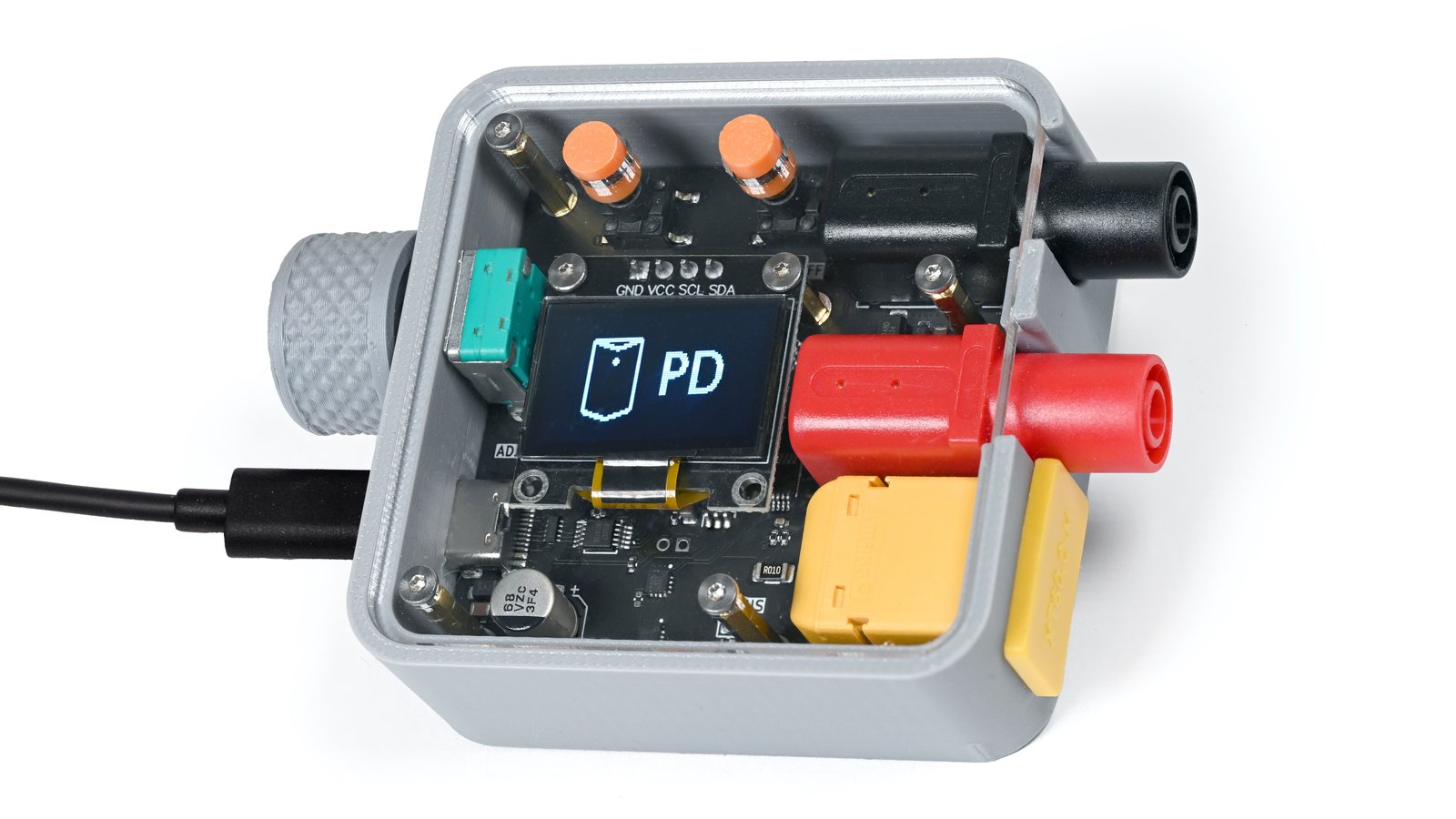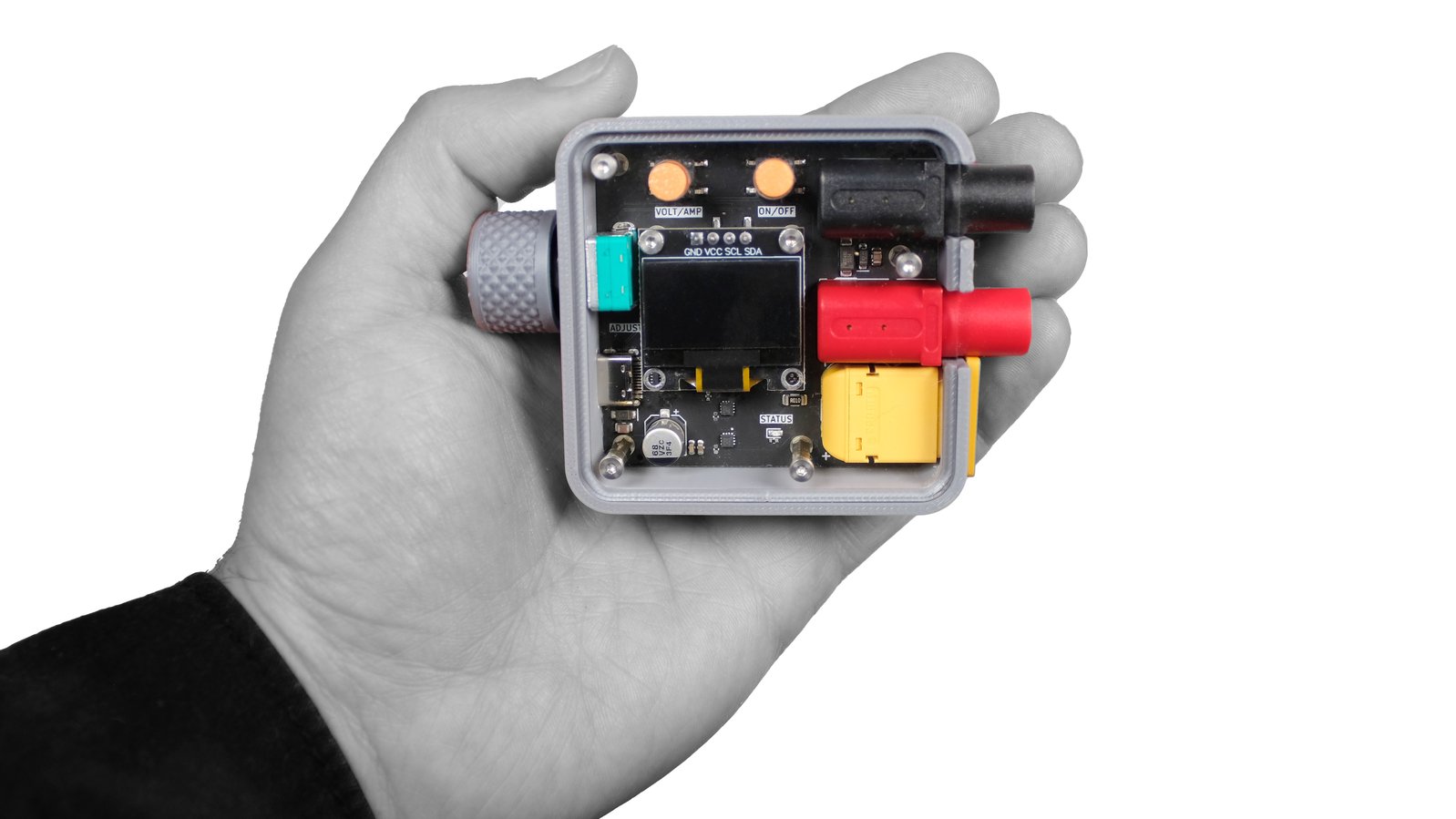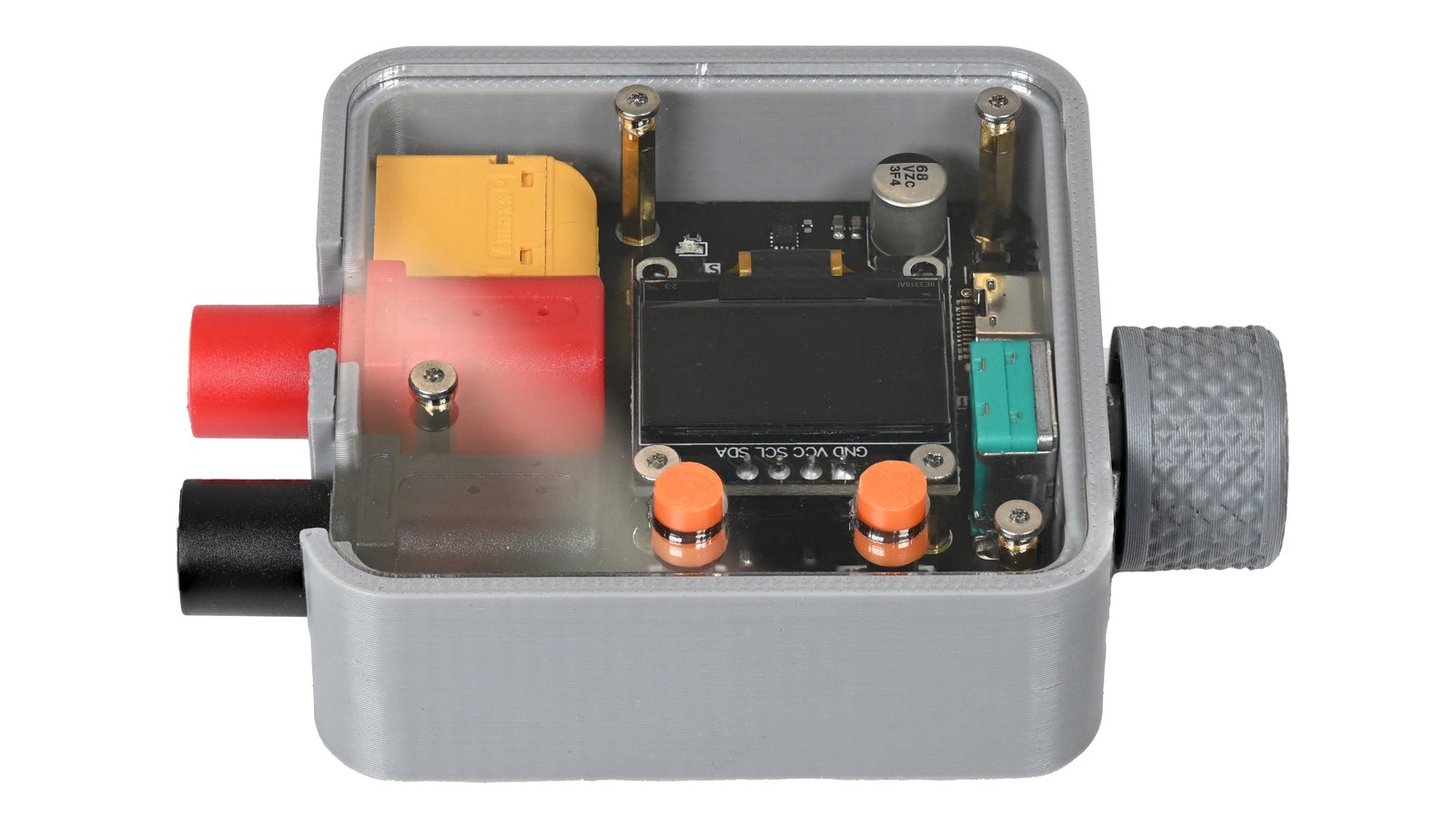A Versatile Power Supply in Your Pocket——Come and Support Itï¼

PocketPD is a small, portable USB Type-C powered desktop power supply that can easily fit in your pocket. Despite its compact size, it's packed with advanced features, making it a powerful tool for both hobbyists and professionals. It supports a wide voltage range and includes built-in safety mechanisms to ensure reliable performance. The device also comes with an OLED display, current sensor, and banana plug output, allowing it to be used with a variety of standard devices like modern USB-C chargers or power banks.
In addition to its basic functionality, PocketPD offers an extra feature: it can act as a Power Delivery 3.0 profile tester. This makes it a versatile tool for testing and debugging PD-compatible devices. By utilizing the Programmable Power Supply (PPS) mode found in USB Power Delivery 3.0 and later versions, PocketPD allows users to directly access precise voltage and current levels from their charger, giving them more control over their power delivery setup.
The design of PocketPD was driven by the need for an open-source, user-friendly, and portable solution. It features physical buttons and a clear OLED display, making it easy to use right out of the box. Simply plug in a compatible charger or power bank, and you're ready to go—no complex configuration required. With its combination of functionality, ease of use, and portability, PocketPD is a great addition to any toolkit, whether you're a seasoned engineer or just starting out.

Core Design
At the heart of PocketPD is the Programmable Power Supply (PPS) mode, introduced in 2015. This mode was originally designed to enhance battery charging for smartphones, enabling devices to set exact voltage and current levels. As a result, PPS has become a popular choice for desktop power supplies. Many modern USB-C chargers and power banks, including those from well-known brands like Anker, Ugreen, Baseus, and CUKTECH, now support this mode. Before using PocketPD, it’s recommended to check your charger or power bank's specifications to ensure compatibility.

It’s important to note that the maximum voltage and current output of PocketPD depends on the capabilities of your USB Type-C charger and cable. The overall power output will be limited by the lowest current rating between the charger and the cable. For example, if your charger supports 5A but you're using a 3A cable, the maximum output will be capped at 3A. Similarly, the voltage range available on PocketPD will depend on the charger's supported range, which commonly includes options like 3.3V to 11V or 3.3V to 21V.
Features & Specifications
- Input: USB Type-C, PD 3.0 compliant
- Output: 0–20 V @ 0–5 A (adjustable)
- Modes: Constant Voltage (CV), Constant Current (CC)
- Display: 0.96-inch OLED display
- Microcontroller: Raspberry Pi RP2040 Cortex M0+
- Protocol IC: AP33772 USB PD sink controller
- Safety Features: Short circuit, reverse current, fly-back diode protection
- Dimensions: 87 x 62 x 25.5 mm (3.43 x 2.44 x 1 in)
- Weight: 81 g (2.87 oz)
This exciting project is currently being crowdfunded on CrowdSupply. If you're interested in supporting innovative hardware projects, make sure to check out PocketPD and consider contributing when the campaign launches. It’s a great opportunity to get involved in a cutting-edge, open-source power supply solution that combines practicality with advanced technology.
Canning Jar,Glass Canning Jar,Glass Jar With Metal Lid,Wide Mouth Glass Food Jar
Xuzhou Bolite Import & Export Trading Co.,Ltd. , https://www.xzbltglass.com